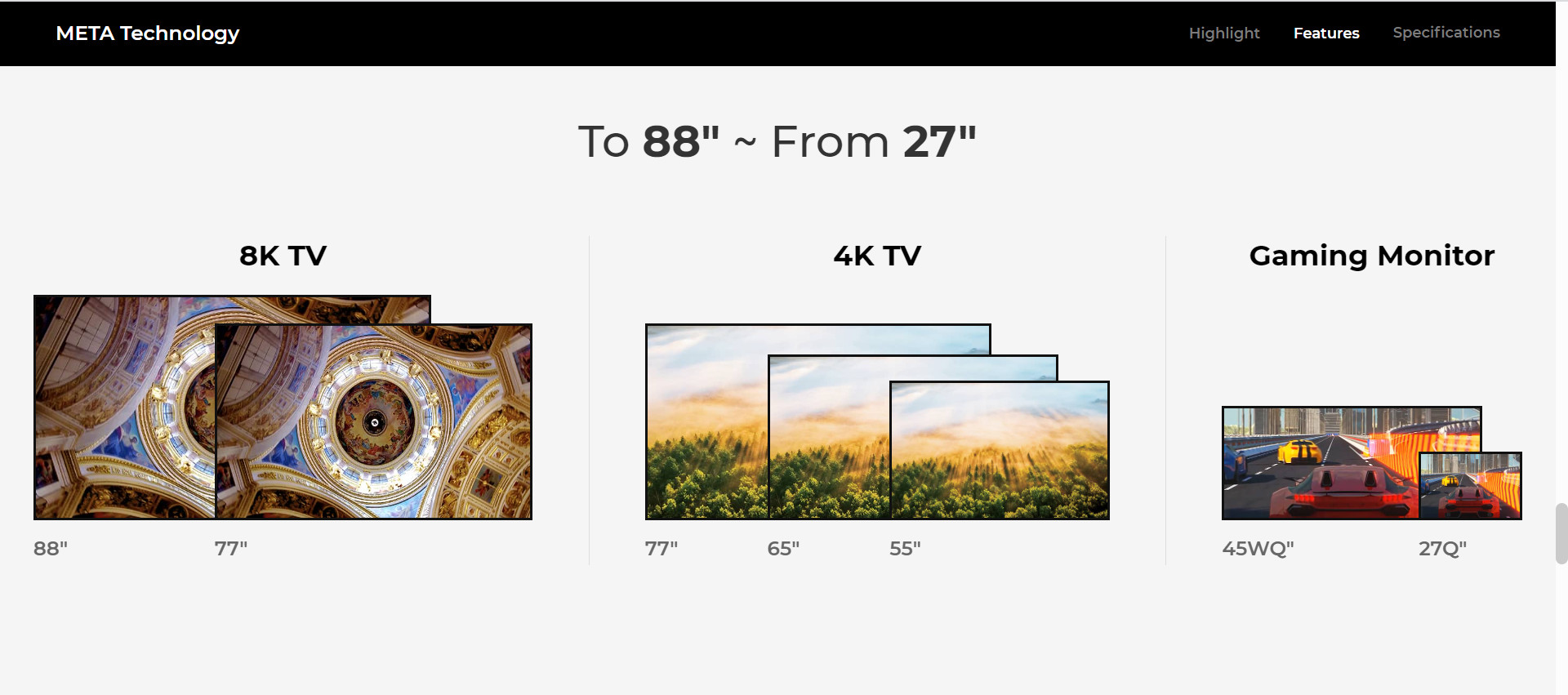OLED TVs are about to get way brighter — here’s the secret of how they’re doing it
It feels like we just saw some of the best OLED TVs we’ve yet to see in the form of the LG C2 OLED and LG G2 OLED thanks to LG OLED Evo technology but LG Display, the company that makes the panels inside those TVs, isn’t ready to rest on its laurels.
In 2023, the display manufacturer is hard at work developing the next generation of OLED TV tech, one that’s going to be substantially brighter than previous versions through the use of Micro Lens Arrays (MLA). These microscopic lenses act as light boosters and can intensify brightness — with early estimates putting the percentage increase around 60% brighter than this year’s top OLED TVs.
LG Display is calling the technology META — a relatively confusing nomenclature given the fact that there’s already a popular tech company with that name — but one that LG Display thinks will perfectly represent the changes it’s making to OLED panels moving forward.
I got the chance to see some of these META panels at a closed-door demo at CES 2023, and while there are a few sticking points to them, they looked like the future for brighter OLED TVs. And that, I think, is something everyone should be excited about.
Micro Lens Array: What is it and how does it make OLED better?
Since its inception, really, OLED TVs have had the same strengths and weaknesses. They’ve always offered exceptional contrast, being able to produce some of the best black levels of any type of display technology, but couldn’t ever be as bright as an LED-LCD TV.
That last fact is what has helped QLED TVs thrive these last few years. They’re significantly brighter, and people with a lot of ambient light in their living rooms needed a way to compensate for that with brighter TVs.
The way META OLED panels will work, however, will change that paradigm.

On a 77-inch 4K TV, for example, there would be 5,117 lenses per pixel. The total peak brightness, LG expects, will be somewhere around 2,100 nits in a 3% window, which is close to double the brightness we saw on the second-generation LG OLED Evo panels.
The addition of Micro Lens Array will lead to brighter pixels — and there’s going to be a lot of these lenses per pixel: on a 77-inch 4K TV, for example, there would be 5,117 lenses per pixel. The total peak brightness, LG expects, will be somewhere around 2,100 nits in a 3% window, which is close to double the brightness we saw on the second-generation LG OLED Evo panels.
Helping the pixels reach their optimal brightness is a new lighting algorithm that “precisely analyzes brightness information and makes adjustments in each scene so OLED devices can express peak brightness accurately even when areas of peak brightness in the image increase.”
The META booster algorithm works alongside the new Micro Lens Array tech to create the brightest picture we’ve yet to see from an OLED panel.
So what’s the downside here?
The big downside is that LG Display won’t use META technology in all the panels it creates — in fact, only 55-inch, 65-inch and 77-inch 4K TVs will be produced with META technology. If you want, say, a brighter 42-inch or 48-inch OLED TV, you’re out of luck. Whatever TV you buy will be using older OLED technology.
Not only is that a disappointment for folks who want smaller sizes, but it can make things confusing for reviewers as well. When we go to review the next OLED TVs with META technology, we’ll have to be extra careful to denote that not every model in the range will have the same performance. The result is more reading of the fine print when you buy a TV.

The other potential downside here is cost — Micro Lens Array OLED panels are probably going to cost more to produce and will therefore be more expensive to buy.
The other potential downside here is cost — Micro Lens Array OLED panels are probably going to cost more to produce and will therefore be more expensive to buy. What will likely happen, in my opinion, is that TV makers like LG Electronics and Sony will only implement 3rd Generation OLED panels in their most expensive models. That way, consumers will expect the higher price tag and won’t be as shocked by it.
Having seen them briefly I can attest that META OLED panels offer a brighter picture, though they still weren’t on par with the Samsung Neo QLED TVs that I saw earlier in the day. I suspect that QLED TVs will still ultimately be the brighter of the two TV types — however, now you might not have to completely disregard OLED when shopping for a space with lots of ambient light.
Of course, LG Display isn’t the only one in line to make brighter, more colorful OLED panels in 2023 and will have to watch out for Samsung Display’s new QD-OLED panels that will make their appearance in the Samsung S95C OLED. We won’t be able to make direct comparisons between the two new displays until we get finished products in our testing lab, obviously, but this is definitely the race you want to watch if you care about buying a brighter, better OLED TV this year.
For all the latest Technology News Click Here
For the latest news and updates, follow us on Google News.
